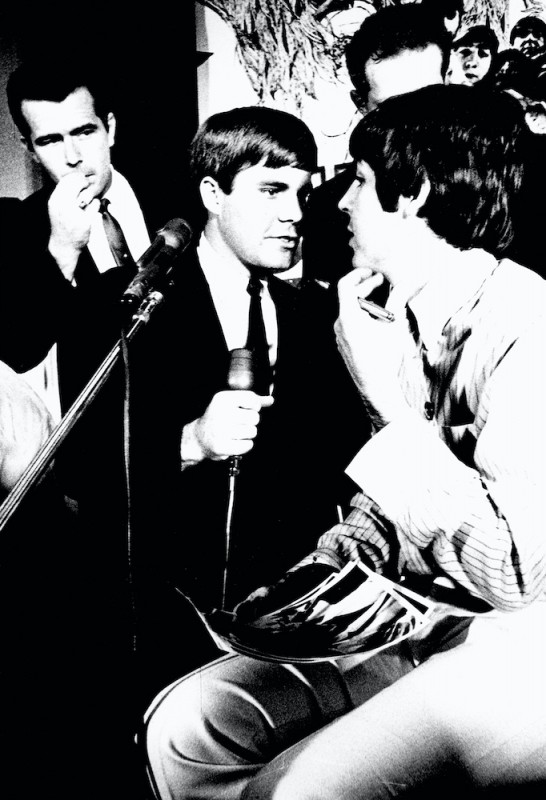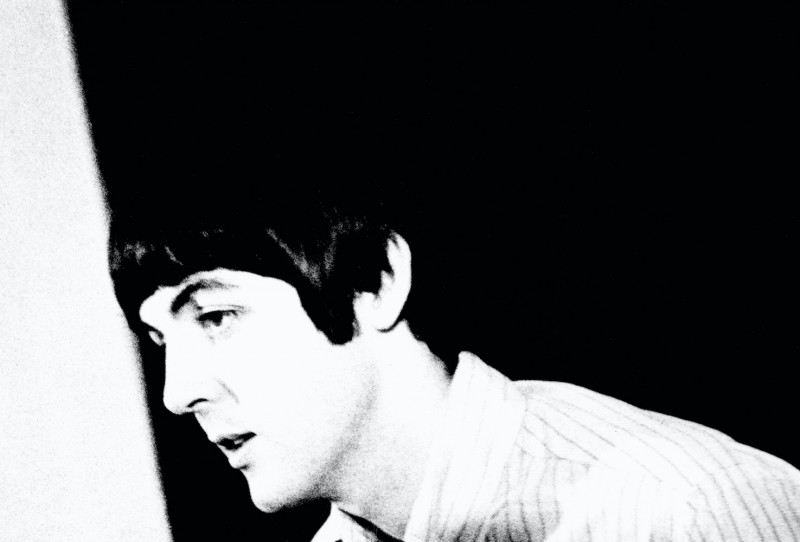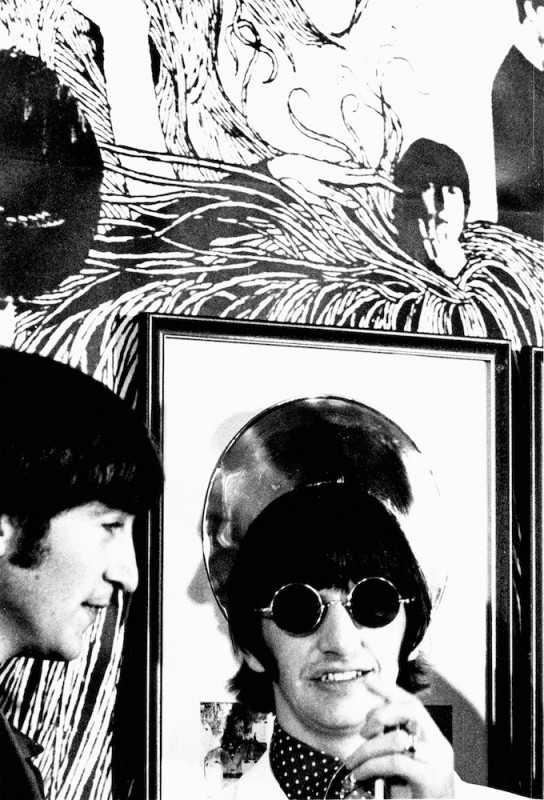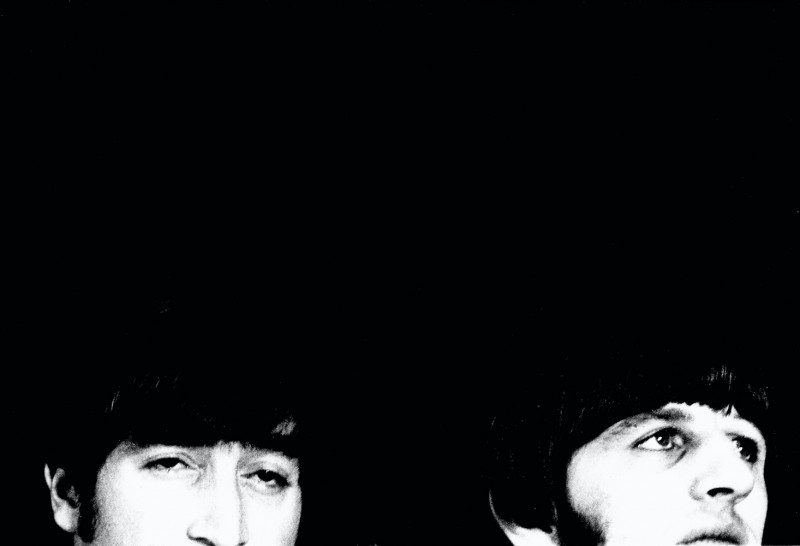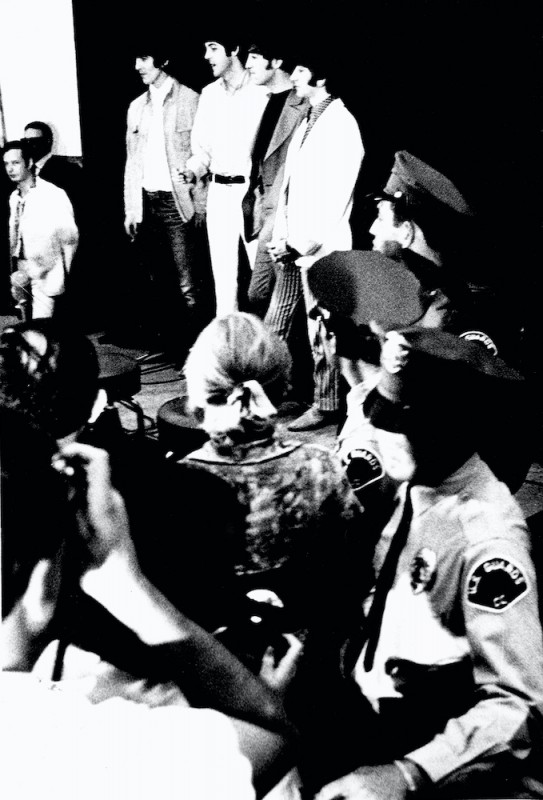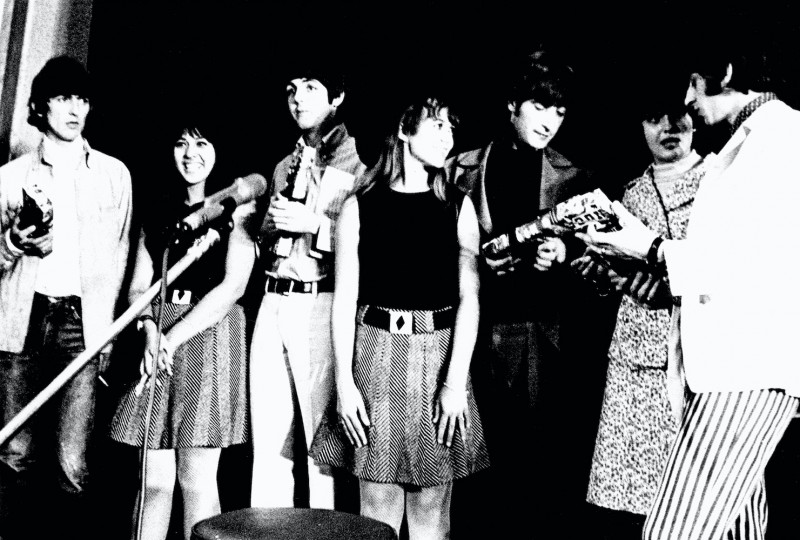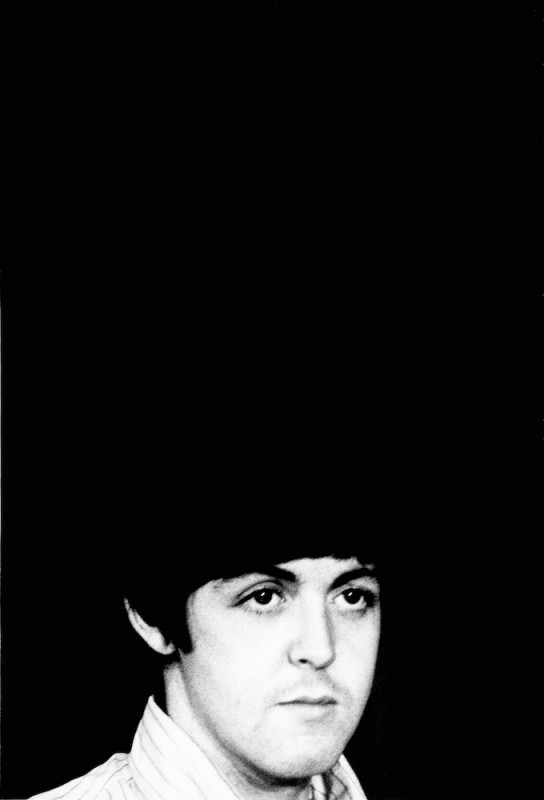Ralph Gibson photographed The Beatles in 1966
Ralph Gibson photographed The Beatles in 1966
Ralph Gibson
January 25, 2022
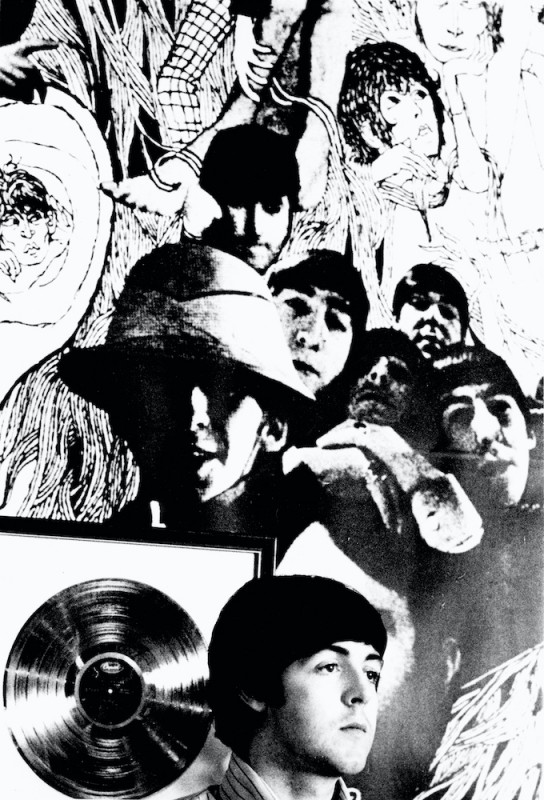
The sixteen pictures, currently being shown at the Laurence Miller Gallery, reveal the photographer's broad repertoire. Few of the motifs cover the circus-like momentum at the press conference, where the space is packed with press representatives and security personnel, and the band is only visible at the very edge of the podium. Instead, it is Gibson's subjective eye that is much more in evidence: he gets his Leica M up close to the band, focusing entirely on their heads, against a black backdrop, and on their gestures. In one of the photos, Paul McCartney appears to be part of the cover, designed by Klaus Voormann, for the Grammy-winning album: in the picture, McCartney's head blends in, almost completely, with the large-format cover motif hanging on the wall.
Gibson's delight in the project can still be felt today. Back at the time, he went immediately into his darkroom in L.A.'s Beverly Glen district to work on and produce sixteen prints, which he enthusiastically presented to Capitol Records' creative department the next day. There were plans for their publication; a dummy layout was prepared; and Gibson believed that this would mark his long-awaited professional breakthrough. Then came sober reality: the dummy was stolen; the project was not pursued further; and the pictures fell into oblivion. The only thing that remained were the sixteen prints Gibson made at the time – but hidden in the photographer's archive. Now viewers can rediscover them at the gallery presentation. They reveal the photographer, but also the band, at creative crossroads: in Gibson's case, it would be years before he gained rapid fame, after moving to New York and publishing his first book; while The Beatles, after all the excessive success and hype, decided that Revolver would be the last album they would go on tour for.
Ralph Gibson, THE BEATLES—1966
up until February 12, 2022, at the Laurence Miller Gallery, 9 EAST 8TH STREET, BOX 119, NY, NY 10003. (By appointment only.)
Ralph Gibson+-
Born in Los Angeles, California, on January 16, 1939, Gibson studied Photography in the U.S. Navy; and at the San Francisco Art Institute (1960-62). He worked as an assistant to Dorothea Lange (1961-62), and Robert Frank (1967-68). Gibson founded Lustrum Press in 1969. Since then, over 40 monographs have been published. His work is found in the most important museum and private collections, has been exhibited around the world, and has received many awards. These include the Leica Medal of Excellence in 1988, the French Ordre national de la Légion d’honneur in 2018, and his induction into the Leica Hall of Fame in 2021. Gibson lives in New York. More

